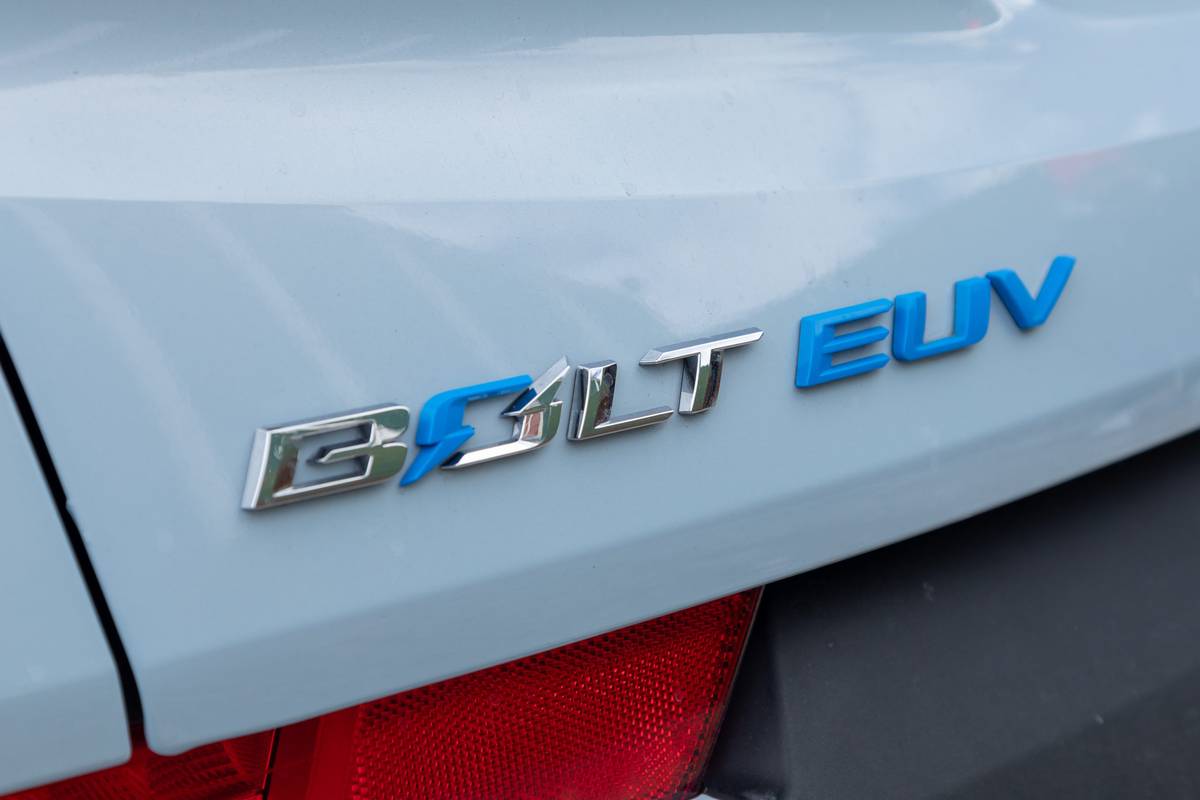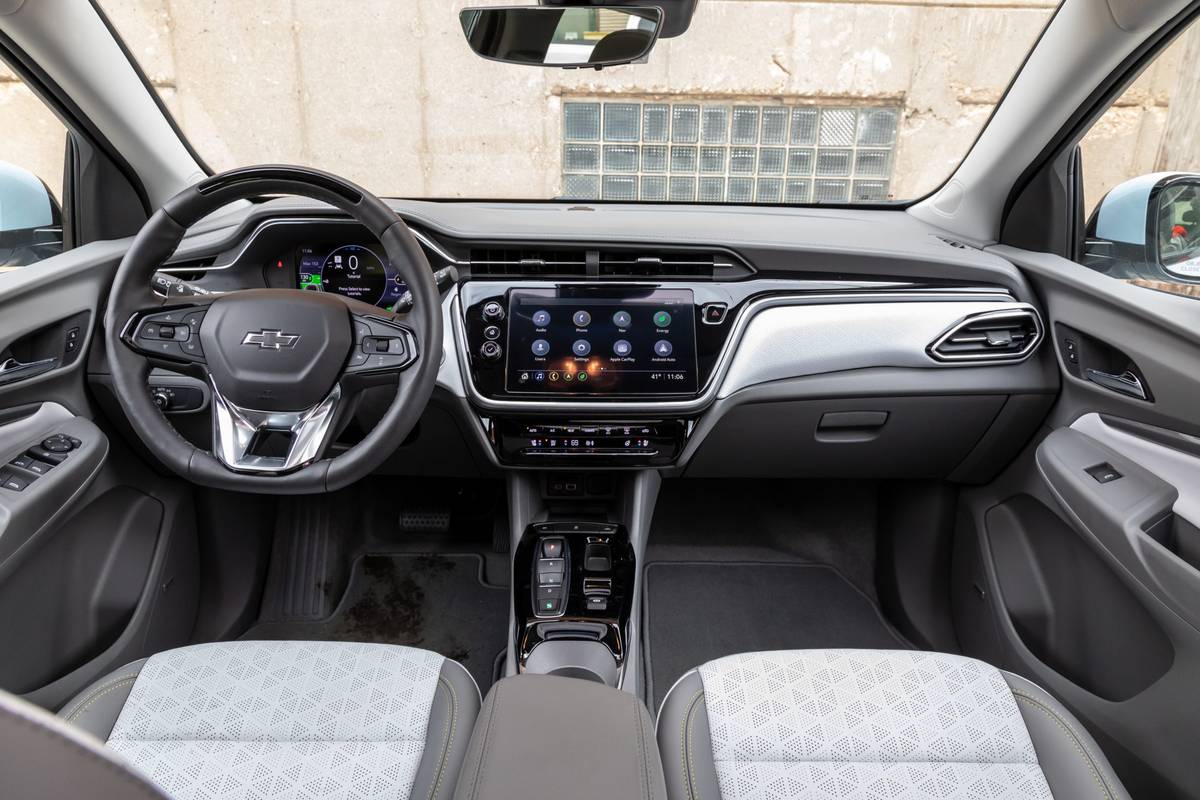2023 Chevrolet Bolt EV’s Price Cut Makes a Good Thing Better


The big news for the 2023 Chevrolet Bolt EV and Bolt EUV electric vehicles came last week in the form of a price cut: $5,900 bucks less than the 2022 model for the Bolt EV and $6,300 for the longer-wheelbase Bolt EUV. Yes, something actually got cheaper in 2022, which is practically unheard of in the age of pandemic-related inflation. There are a couple reasons for General Motors’ move: The Bolt EV is coming off of a reputational hit thanks to battery fires (that have now been resolved), and GM has lost its federal $7,500 consumer tax credit since it has now passed the threshold limit for EV sales. That one-two punch wasn’t going to let Chevy just cancel the Bolt EV, however. Instead, the company sensed an opportunity and lowered the price to improve its competitiveness, making it the cheapest new EV you can buy in America.
Related: 2022 Chevrolet Bolt EUV Review: Electric; Useful; Vanilla

Good as a Commuter
We’re already fans of the Bolt EV and EUV. Our recent review of the Bolt EUV came away with the impression that as a commuter vehicle, it shines — good range, comfortable cabin, lots of amenities and good value for money, which has now become stellar value for money. We even named it our 2022 Commuter EV Top Pick. If you’re looking for an inexpensive new EV, there are now four choices that start around $30,000 instead of the previous two: the Nissan Leaf, the Mini Cooper SE, and the ‘23 Bolt EV and EUV (five if you count the California-only Mazda MX-30). Against the base models of those competitors, the Bolt EV positively shines. For the lesser entry price, you get more than 100 miles of additional range over the Leaf (149 miles), the SE (114 miles) and the MX-30 (100 miles) thanks to the larger standard battery in the Bolt EV (259 miles) and EUV (247 miles). You also get a more powerful drivetrain, with the Bolts’ standard 200 horsepower and 266 pounds-feet of torque, compared to the Leaf’s 147 hp, the Mini’s 181 hp or the Mazda’s 143 hp.
None of these cars are great at fast-charging on a DC fast charger due to the limitations of their charging systems — both the MX-30 and base Leaf max out at 50 kilowatts for DC fast charging (the bigger battery Leaf can go to 100-kW max), while the Bolt EV doesn’t go above 55 kW. The Mini offers 50-kW DC fast charging. The Leaf further complicates things by using the less-common CHAdeMO fast-charging connector, meaning you have to find a compatible fast charger, as well. All of this means that these cars are best charged at home overnight using a Level 2 240-volt system, then used as gas-free commuter vehicles rather than cross-country road trippers. Our recently reviewed loaded 2022 Bolt EUV, equipped with an older but still excellent and functional version of General Motors’ hands-free highway-driving Super Cruise system and costing $43,190, would now sticker at less than $37,000 for a comparable 2023 model.
For our money, choosing the ‘22 Bolt EV and EUV as our Commuter EV Top Pick only feels even more justified now, and thanks to this price drop, you can easily argue that the Bolt EV has become the best value, too. Note: The price drop applies to the new 2023 model-year version of the Bolt EV and EUV, which starts production later this summer, so don’t go rushing out to your Chevy dealer just yet to pick one up. They won’t be in showrooms for a while yet.

Good as a Second Car?
A lot of people gave up the idea of a second car in their household during the pandemic — offices closed, working from home became the norm for much of white-collar America and having that second car in the garage became an unnecessary luxury for a lot of people. Additionally, used-car prices skyrocketed and have stayed elevated, making that largely unused second car worth a lot more if you just sold it outright. But the times, they are a-changin’, and increasingly people are heading back into the office. And if you’re now looking for a second car, the sticker shock is real: The average price of a used car has topped $25,000 for a recent model and has more than doubled for cars older than 10 years. That makes “should I buy new or used?” an even more pressing question.
Here’s a suggestion: For a few thousand bucks more than the median price of a 3-year-old mid-size car, you can have a brand-new Bolt EV, delivering a new-car warranty, freedom from gas-price fluctuations, a bunch of the latest and greatest high-tech features and a credit towards home charging installation, all in a package that serves beautifully in many two-car households.
Of course, there are some caveats to this, mostly around owning an EV. It’s important to have a plan for charging it and to be familiar with your typical usage routine to make sure one will work for you. Living somewhere with street parking or in an apartment building that has no charging for residents makes EV ownership tricky. But for suburban dwellers who find themselves returning to the commute and already planning to spend in the high-$20,000 range for a second car, now might be the time to make the switch to electric, given the value proposition Chevy has just handed down.
Editor’s note: This story was updated June 8, 2022, to reflect the Mini Cooper SE’s DC fast-charging capability.
More From Cars.com:
- Electric Vehicles: Understanding the Terminology
- Your Guide to EV Batteries: Premature Death, Range Loss and Preservation
- Top 10 Most Efficient Electric Cars
- What’s New With Electric Vehicles for 2022?
- What It Cost to Outfit 6 Homes With EV Chargers
- Find Your Next Car
Related Video:
Cars.com’s Editorial department is your source for automotive news and reviews. In line with Cars.com’s long-standing ethics policy, editors and reviewers don’t accept gifts or free trips from automakers. The Editorial department is independent of Cars.com’s advertising, sales and sponsored content departments.

Detroit Bureau Chief Aaron Bragman has had over 25 years of experience in the auto industry as a journalist, analyst, purchasing agent and program manager. Bragman grew up around his father’s classic Triumph sports cars (which were all sold and gone when he turned 16, much to his frustration) and comes from a Detroit family where cars put food on tables as much as smiles on faces. Today, he’s a member of the Automotive Press Association and the Midwest Automotive Media Association. His pronouns are he/him, but his adjectives are fat/sassy.
Featured stories




